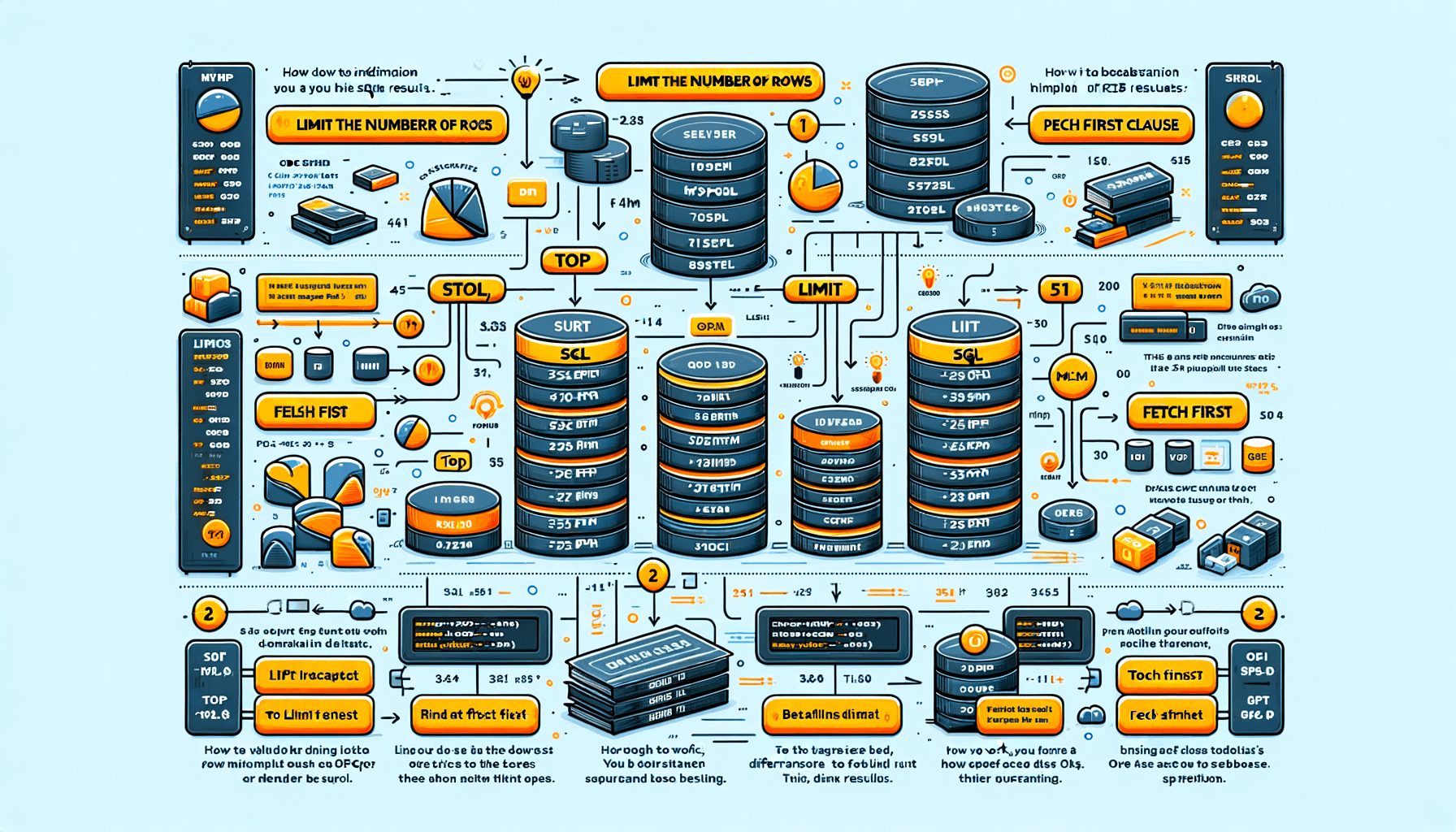A big variety of articles and resources

Understanding What a SQL Query Is and How It Works
 Sia Author and Instructor
Learn SQL
Sia Author and Instructor
Learn SQL
9 minute read
SQL, or Structured Query Language, is a powerful tool for managing and manipulating databases. Whether you're pulling data for a report or updating records, SQL queries are essential for interacting with databases. This article will help you understand what SQL queries are and how they work, making it easier for you to use them effectively.
Key Takeaways
- SQL queries are commands used to interact with databases, allowing you to retrieve, update, and manage data.
- The basic components of a SQL query include SELECT, FROM, WHERE, and other clauses that define the data you want to work with.
- SQL engines process and execute queries, optimizing them for faster performance.
- Common SQL operations include data retrieval with SELECT, data manipulation with INSERT, UPDATE, and DELETE, and combining data with JOINs.
- Advanced techniques like subqueries, window functions, and Common Table Expressions (CTEs) can help you write more efficient and powerful queries.
Defining a SQL Query
Basic Components of a SQL Query
A SQL query is a request made to a database to retrieve or manipulate data. It consists of several key components: the SELECT statement, which specifies the columns to be retrieved; the FROM clause, which indicates the table from which to retrieve the data; and optional clauses like WHERE, GROUP BY, and ORDER BY to filter, group, and sort the data, respectively. Understanding these components is crucial for anyone looking to master SQL.
Types of SQL Queries
SQL queries can be broadly categorized into four types: Data Query Language (DQL), Data Definition Language (DDL), Data Control Language (DCL), and Data Manipulation Language (DML). DQL is used for data retrieval, primarily through the SELECT statement. DDL includes commands like CREATE, ALTER, and DROP, which define and modify database structures. DCL involves permissions, using commands like GRANT and REVOKE. Lastly, DML includes INSERT, UPDATE, and DELETE commands, which are used to manipulate data within the database.
Importance of SQL Queries in Data Management
SQL queries are fundamental to data management. They allow us to interact with the database, making it possible to retrieve, update, and manage data efficiently. In a world driven by data, mastering SQL queries is essential for making data-driven decisions and gaining insights from large datasets. Whether you're a junior data analyst or a marketing analyst, learning SQL can significantly enhance your ability to work with data and advance your career.
In our mini course: SQL Query Crafting, you'll learn essential SQL queries, advanced reporting skills, data-driven decision making, and career advancement in data analysis and marketing.
How SQL Queries Work
Query Execution Process
When we run a SQL query, the database system follows a series of steps to get the results. First, the query is parsed to check for any syntax errors. Then, the system creates an execution plan, which is a roadmap for how to get the data. Finally, the query is executed, and the results are returned. Understanding this process helps us write better queries.
Role of SQL Engine
The SQL engine is the part of the database system that handles query processing. It takes the execution plan and carries out the steps to retrieve or modify the data. The engine ensures that the query runs efficiently and correctly. In a mastering MySQL performance and query optimization course, you can learn more about how the SQL engine works.
Optimization Techniques
To make SQL queries run faster, we can use various optimization techniques. These include indexing, query rewriting, and using efficient joins. By applying these methods, we can significantly improve the performance of our queries. This is especially important when dealing with large datasets or complex queries.
Common SQL Query Operations
Data Retrieval with SELECT
When we need to fetch data from a database, we use the SELECT statement. This command allows us to specify the columns we want to retrieve and apply conditions to filter the results. For example, if we want to get the names of all employees in a company, we would use a query like SELECT name FROM employees;. The SELECT statement is fundamental for data analysis and reporting.
Data Manipulation with INSERT, UPDATE, DELETE
Data manipulation involves adding, modifying, or removing data in a database. The INSERT statement is used to add new records, the UPDATE statement modifies existing records, and the DELETE statement removes records. For instance, to add a new employee, we might use INSERT INTO employees (name, position) VALUES ('John Doe', 'Manager');. These operations are crucial for maintaining accurate and up-to-date data.
Using JOINs to Combine Data
JOINs are used to combine rows from two or more tables based on a related column. There are different types of JOINs, such as INNER JOIN, LEFT JOIN, and RIGHT JOIN. For example, an INNER JOIN can be used to get a list of employees along with their department names: SELECT employees.name, departments.name FROM employees INNER JOIN departments ON employees.department_id = departments.id;. JOINs are essential for creating comprehensive datasets from multiple tables.
Understanding these common SQL operations is key to effectively managing and analyzing data. By mastering these commands, we can perform a wide range of tasks, from simple data retrieval to complex data manipulation.
Advanced SQL Query Techniques
Subqueries and Nested Queries
Subqueries, also known as inner queries, are queries within another SQL query. They allow us to perform complex filtering and calculations. For example, we can use a subquery to find employees who earn more than the average salary in their department. Subqueries can be used in SELECT, INSERT, UPDATE, and DELETE statements, making them versatile tools in SQL.
Window Functions
Window functions perform calculations across a set of table rows related to the current row. Unlike aggregate functions, they do not group the result set into a single output row. Instead, they provide a value for each row. Common window functions include ROW_NUMBER(), RANK(), and DENSE_RANK(). These functions are essential for tasks like ranking, running totals, and moving averages.
Common Table Expressions (CTEs)
CTEs are temporary result sets that can be referenced within a SELECT, INSERT, UPDATE, or DELETE statement. They make complex queries easier to read and maintain. A CTE is defined using the WITH keyword, followed by the CTE name and the query. For instance, we can use a CTE to break down a complicated query into simpler parts, improving both readability and manageability.
Mastering these advanced techniques can significantly enhance our ability to handle complex data scenarios and optimize query performance.
Practical Applications of SQL Queries
Business Intelligence and Reporting
In the realm of business intelligence, SQL queries are indispensable. They allow us to extract meaningful insights from vast datasets, enabling data-driven decision-making. By mastering SQL, we can generate detailed reports that highlight key performance indicators and trends, which are crucial for strategic planning.
Data Analysis and Visualization
SQL queries play a pivotal role in data analysis and visualization. They help us filter, sort, and aggregate data to uncover patterns and correlations. With tools like SQL, we can transform raw data into visual representations such as charts and graphs, making complex data more understandable and actionable.
Database Administration Tasks
For database administrators, SQL queries are essential for maintaining and optimizing database systems. They enable us to perform tasks such as data backup, recovery, and security management. By using SQL, we can ensure that databases run efficiently and securely, supporting the overall health of the data infrastructure.
Best Practices for Writing SQL Queries
Ensuring Query Efficiency
When writing SQL queries, it's crucial to focus on efficiency. Efficient queries run faster and use fewer resources. To achieve this, we should use indexes wisely, avoid unnecessary columns in SELECT statements, and use JOINs instead of subqueries when possible. Additionally, always filter data early in the query to reduce the amount of data processed.
Maintaining Readability and Maintainability
Readability and maintainability are key for long-term success. We should use clear and consistent naming conventions for tables and columns. Breaking down complex queries into smaller, manageable parts can also help. Commenting on your code is another good practice, as it helps others understand the logic behind your queries.
Handling Errors and Exceptions
Handling errors and exceptions properly ensures that your queries run smoothly. We should use TRY...CATCH blocks to manage errors and provide meaningful error messages. It's also important to validate input data to prevent SQL injection attacks and other security issues.
By following these best practices, we can write SQL queries that are not only efficient but also easy to read, maintain, and debug.
Writing SQL queries can be tricky, but following best practices makes it easier. Want to learn more? Visit our website to explore our courses and become a SQL expert. Our team of professionals is here to help you every step of the way. Don't wait, start your journey today!
Conclusion
In conclusion, understanding SQL queries is essential for anyone working with databases. SQL allows you to interact with and manipulate data efficiently, making it a powerful tool in various fields such as data analysis, software development, and business intelligence. By mastering SQL queries, you can unlock the potential of your data, gain valuable insights, and make informed decisions. Whether you are a beginner or an experienced professional, continuous learning and practice are key to becoming proficient in SQL. With the right resources and dedication, you can enhance your skills and become a valuable asset in any data-driven environment.
Frequently Asked Questions
What is SQL?
SQL stands for Structured Query Language. It's a programming language used for managing and manipulating databases.
Why are SQL queries important?
SQL queries are essential because they help you retrieve, update, and manage data in a database. They are the backbone of any data-driven application.
What are the basic components of a SQL query?
The basic components of a SQL query include SELECT, FROM, WHERE, and JOIN clauses. These parts help you specify what data you want to retrieve and how to filter it.
What is a JOIN in SQL?
A JOIN in SQL is used to combine rows from two or more tables based on a related column. This helps you retrieve related data stored in different tables.
How can I make my SQL queries run faster?
You can optimize your SQL queries by using indexes, avoiding unnecessary columns in SELECT statements, and writing efficient JOINs. Proper query planning and execution also help.
What are subqueries in SQL?
Subqueries are queries nested inside another query. They are used to perform operations that require multiple steps, making complex queries easier to manage.
Related Articles

How to limit rows in SQL results
11 minute read

How to practice my SQL skills?
12 minute read

How to select a percentage of rows in SQL
8 minute read




